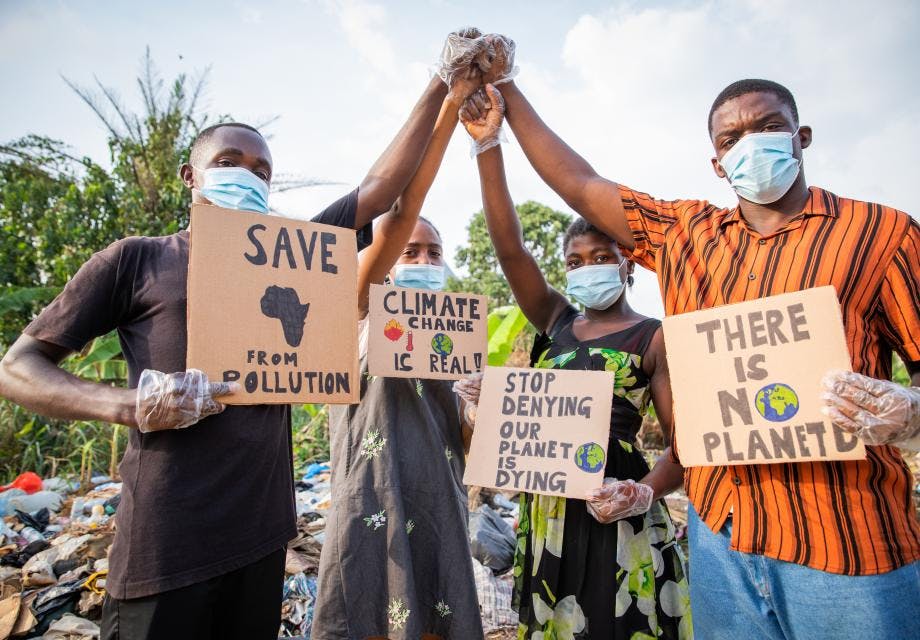Climate change and HIV: what do we know so far?
Hester Phillips
08 November 2022
Growing evidence suggests climate change is affecting HIV epidemics in Africa and elsewhere
The Lancet has released a report on the links between climate change and health, adding to growing evidence on how climate change is affecting HIV epidemics in Africa and elsewhere.
What is this story about?
The new Lancet Countdown on health and climate change shows how climate change is affecting health through things such as food insecurity (when not enough food is available or is only available inconsistently) and increasing infectious diseases.
It only mentions HIV briefly, highlighting how drought in South Africa disrupted supplies of HIV treatment in rural areas. But there is now a growing body of evidence that climate change is affecting HIV epidemics in Africa and elsewhere.
What is the link between climate change and HIV?
Research clearly shows that climate change is leading to food shortages due to thing like failing crops and reduced fish catches as well as extreme weather events like droughts and floods. All these things affect people’s lives and how they behave. And this is where the link to HIV comes in.
Extreme weather events
The Lancet reports that 29% more global land was affected by extreme drought for at least one month between 2012 and 2021 compared to 1951 and 1960 (on average).
Droughts and other extreme weather puts food and water security at risk and affect livelihoods. This can lead people to take risks with their health. A 2019 study found that droughts were linked with 15–19 year old girls in rural parts of Lesotho having riskier sex, such as transactional sex, and higher HIV prevalence rates. A study of 19 African countries found that HIV infections rose by 11% in areas with high HIV prevalence for every drought due to changes in behaviour.
Extreme weather events can also affect HIV treatment. A 2022 evidence review of more than 100 African studies found that economic and livelihood disruption caused by droughts particularly pose a threat to treatment adherence.
Food insecurity
The Lancet report says an additional 98 million people are now experiencing at least medium food insecurity due to climate change (compared to the 1981-2010 average). Food insecurity can lead people (mainly women) to have transactional sex or for families to agree for a young daughter to be married.
Analysis from sub-Saharan Africa suggests women experiencing severe food insecurity are two times more at risk of HIV than other women. But this link is not present for men. The study found that women experiencing severe food insecurity were 28% more likely to have transactional sex than other women. But they were less likely to be able to use a condom. Among young women (ages 15-24), severe food insecurity was associated with having a partner that was 10 years older or more. Getting food support lowered women’s HIV risk by 64%.
Food insecurity can also affect people with HIV as some HIV medication must be taken with food. When people are food insecure or lack money anything they earn is likely to go on essentials like food, rather than things like transport to a clinic.
Infectious disease
Research suggests increases in certain infectious diseases like malaria due to extreme weather events will make some groups more vulnerable to HIV. Infectious diseases are also riskier for people with HIV who are not on effective treatment, as they are at an increased risk of becoming severely ill or dying.
Increased migration
The consequences of climate change are likely to increase migration. Many climate migrants will already be experiencing income loss and food insecurity so will be more vulnerable to transactional sex, sexual violence and exploitation. Migration can also reduce people’s access to HIV and sexual and reproductive health services (SRH), including HIV treatment. At the same time, migration will extend sexual networks.
Pressure on health services
The Lancet report says that extreme weather and increases in infectious diseases are putting more pressure on already-fragile health systems – health services that are still feeling the effects of Covid-19. This will put more strain on HIV and SRH services.
What does this mean for the HIV response?
Becoming involved with advocacy on this issue is essential. There is a need to show governments how the effects of climate change could derail the HIV epidemic. One way to do this is to collaborate with partners that already work on climate justice. This will ensure the issues of HIV and SRH are brought into climate change discussions and action.
The links between climate change and HIV shows how important it is to respond to people’s lives in more rounded ways. Now more than ever, interventions to prevent HIV or to ensure people take HIV treatment need to consider other issues like people’s livelihoods and food security. This can be done, for example, by providing targeted food packages to people on HIV treatment in drought-affected areas. Or by providing cash transfers or small business loans to families, particularly female-headed households, where girls and women may otherwise face child marriage or have transactional sex to survive.
Get our news and blogs by email
Keep up-to-date with all our latest news stories and blogs by signing up to the Be in the KNOW news digest.
